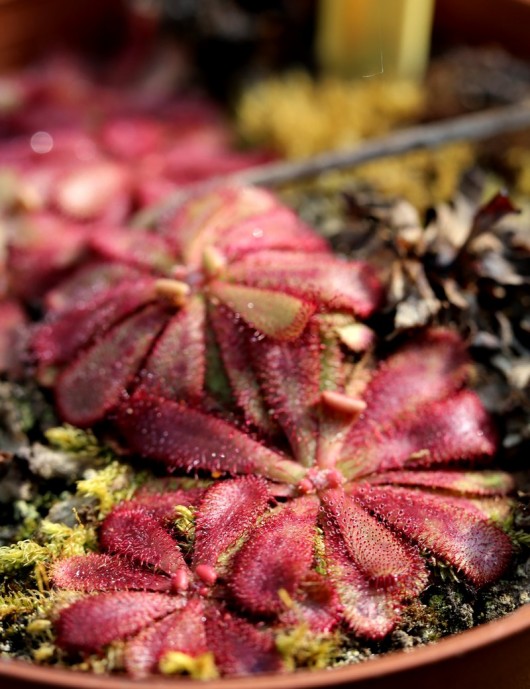
- Out-of-Stock
En culture

En culture

This is a rare sundew from South-West Australia . It grows in a very restricted area near the city of Albany, where another carnivorous plant Cephalotus follicularis lives.
The leaves, shaped like a beaver's tail, are arranged in a rosette 5 cm in diameter and a marked purple if exposed to full sun.
4 to 6 cm in diameter.
 Secure payment
Secure payment
PayPal, Bank card, SystemPay Savings Bank, Check, Bank transfer
 Packaging and packing
Packaging and packing
22 years of experience in packaging our plants. 100% recycled or reused.
Use only rainwater, demineralized or osmosis . Water that is too hard will cause the plant to die in a few weeks. Do not use bottled water, it generally contains too much salt, which is harmful to the plant. In summer, place the plant in a large saucer with water at all times.
In winter, keep the substrate moist without leaving the plant with its feet in water.
Up to 30°C in summer and 0 to 15°C in winter.
Carnivorous plant mix is the basic substrate for many species, you can make it yourself by mixing blond peat , perlite and vermiculite , (4V/1V/1V) or blond peat , and non-calcareous aquarium sand (2V/1V). Sphagnum moss is also suitable.
For optimal growth, high light is necessary. Drosera appreciate a partial shade exposure , or full sun in the early morning, or late afternoon. From spring to autumn, they grow by forming new leaves. In winter, if you cannot leave outside the species that need a cool winter rest, place them in a cool room under artificial light .
To be totally avoided! Plants provide for their own organic nutrient needs through their traps.